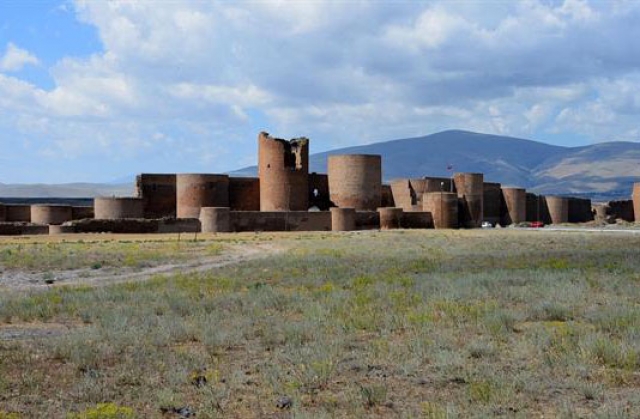
Ani Included in UNESCO’s List of World Heritage Sites

Medieval Armenian capital city of Ani has been included in UNESCO’s list of World Heritage Sites, UNESCO’s official website informs. The decision was taken during the 40th session of UNESCO’s World Heritage Committee held in Istanbul. In the description of Ani posted in UNESCO’s website, it is mentioned that Ani was built by Armenians. It says that though there is little information about Ani’s establishment, it is known that the city was populated during Urartu era in mid first millennia BC.
“The city flourished in the 10th and 11th centuries CE when it became the capital of the medieval Armenian kingdom of the Bagratides and profited from control of one branch of the Silk Road. Later, under Byzantine, Seljuk, and Georgian sovereignty, it maintained its status as an important crossroads for merchant caravans. The Mongol invasion and a devastating earthquake in 1319 marked the beginning of the city’s decline. The site presents a comprehensive overview of the evolution of medieval architecture through examples of almost all the different architectural innovations of the region between the 7th and 13th centuries CE,” is mentioned in the website.
Unesco’s website also informs that Ani was conquered by the Arabs in the middle of the seventh century. After the battle between Arabs and the Kamsarakans (Armenian dynasty), Ani was handed over to another Armenian dynasty: the Bagratides, who consolidated its power by uniting feudal principalities at the end of the ninth century. Although Bagratid King Ashot I (884-890) established his capital at Kars, King Ashot III (953-977) transferred the court from Kars to Ani in 961. It was during this period, (963-964) the inner walls of the city were constructed. With its new status, the city was enlarged and transformed from a fortress into a royal residence and capital of a kingdom. The king Smbat II (977-990) built the second line of the fortifications. During the reign of King Gagik I (990-1020), the city experienced a paramount prosperity for being the center of the cultural, religious and economic activity. It was during this period the renowned architect Trdat built the Cathedral of Ani and round church mausoleum of St. Gregory of Gagik I.
Following Gagik’s rule, the city was attacked by Georgians, Arabs and Byzantines. The town fell in 1045 to the Byzantines who reinforced the Citadel. In 1064 the city was conquered by Seljuks under the command of Alp Arslan. The impressive mosque of Manucehr which is the first mosque of the Anatolian plateau and the building known as Seljuk Palace located north of the city walls were built in this period.’
During the 12th and 13th centuries Ani changed hands several times. After the Mongol invasion in 1239, Ani lost its importance as a commercial center. In the following years, the area remained in the realm of Karakoyunlus, Akkoyunlus and the Ottomans. “We made sure that all the participants of the 40th session of UNESCO’s World Heritage Committee realized that Ani is an Armenian city”, Vahram Kazhoyan, Secretary General of the National Commission of Armenia for UNESCO posted on his Facebook page.























